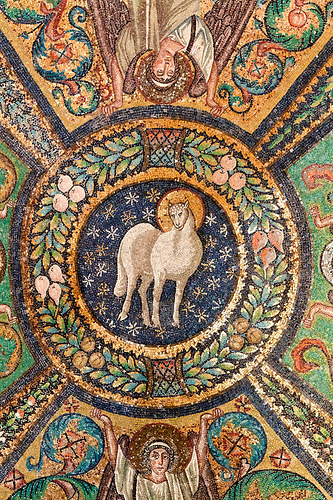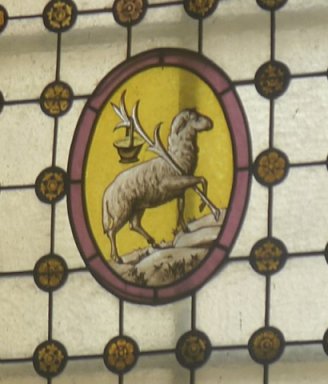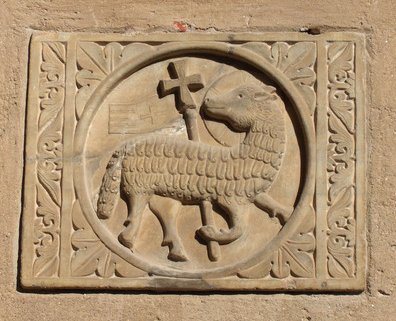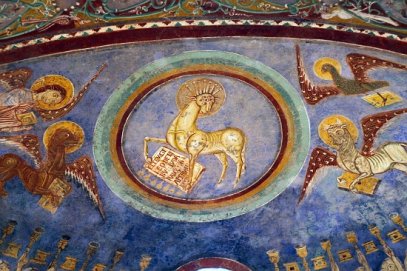|
Early depictions in art |
|
| One of the best places to see early depictions of the Lamb of God is Ravenna, and here are two fifth century examples. The mosaic is in San Vitale, the Greek marble sarcophagus is just outside. | |
|
|
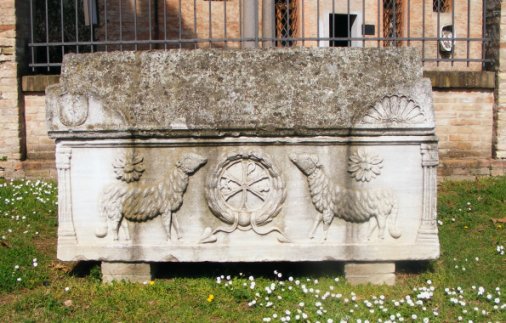 |
This fifth century mosaic of the second coming, from the church of SS Cosmas and Damian in Rome, shows the Lamb of God standing on a small mound, with the four rivers of Paradise flowing from it. Around the Lamb are the twelve apostles, also visualised as sheep. |
|
|
|
|
The Quinisext Council held in Constantinople in 692 rather disapproved of images of Christ as a lamb; henceforth, it decreed, he should be shown as a man. This didn't entirely happen, but medieval examples tended to be symbolic rather than showing a realistic image of a lamb. This ninth century ivory shows the Lamb of God surrounded by the symbols of the Evangelists. |
|
|
|
|
Variations on the image show the lamb carrying a cross or a flag, or opening the sealed book described in Revelation, or bleeding into a chalice as a symbol of the Eucharist. The stained glass image from the Duomo, Gubbio, Italy (below left), seems to show the Lamb carrying its own chalice. |
|
|
|
|
|
|
|
|
|
|
